Over the past month, the crypto industry has been processing stunning news from one of its biggest players and the associated ripple effects. For those of us focused on policy and regulation, the work feels more urgent and important than ever.
Those building in earnest have condemned the recent news about mismanagement and irresponsibility in no uncertain terms. It’s exactly this type of failure of centralized actors and intermediaries that got many excited about the potential of crypto and web3 in the first place.
We find ourselves at a critical inflection point. Consumer education is needed and it is needed now. Policymakers and regulators are increasingly mindful of the devastating consequences of acting too late.
At the same time, it is a time for nuance. Reactive policies that do not recognize the unique nature of the issues with FTX risk kneecapping the unique and promising properties of the technology.
We have seen in the past that policymaking and regulation tends to follow the news cycle. It will be critical to ensure that any proposals are balanced and take into account the diversity and technical realities of the Web3 industry.
As I’ve mentioned before, there is a lot of activity in the policy and regulatory space.
To recap, we have covered: (1) The continued rollout of MiCA, including the steps it’s taking to go from political agreement to reality; (2) The US Executive Order, six months on – and seeing the associated regulatory reports and legislative activity; and (3) The accelerating activity in the UK, especially following the Autumn Statement & the Financial Services and Markets Act.
Here are three things I’m watching this week:
The Financial Stability Board is focusing on DeFi and crypto-assets
The Financial Stability Board (FSB) is a critical international standards-setter that includes central bankers and financial regulators from jurisdictions around the world. As such, their recommendations carry significant weight as countries craft their regulatory regimes around digital assets.
The FSB Plenary met this week in Basel, and one of their focus areas was DeFi and crypto-assets. While the financial stability risks were considered limited to-date, there was an emphasis on crypto trading platforms in light of recent events. They are specifically focused on conflicts of interest, misuse of client assets, and concentrations of risk. There is also a new focus on decentralized finance. According to their press release: “The FSB will enhance its crypto-assets monitoring framework to include DeFi-specific vulnerability indicators and explore approaches to fill data gaps to measure and monitor interconnectedness of DeFi with traditional finance, with the real economy and with the crypto-asset ecosystem.” The Plenary agreed that advancing work on the global regulatory and supervisory framework for crypto-asset markets and activities will be a core part of their 2023 priorities.
This builds upon their ongoing work. In October, the Financial Stability Board (FSB) put forward policy principles around crypto assets and stablecoins, extending their initial work on global stablecoins (more of our analysis on these recommendations here). The principles are open for public consultation, with comments due on December 15. The Crypto Council will be submitting a comment that includes a Global Regulatory Blueprint.
Singapore is consulting on its policy framework
Speaking of consultations, the Monetary Authority of Singapore has an open consultation on its proposed policy framework for digital payment token (DPT) services and stablecoins. The consultation was highly-anticipated because for some time, Singapore has been angling to position itself as a hub for crypto-innovation. While a comprehensive framework is welcome, there have been calls for greater flexibility around retail trading and self-hosted wallets.
The proposed framework covers three broad areas:
- Consumer Access: This covers risk disclosures and the limits of retail crypto trading.
- Business Conduct: This includes required risk management practices for service providers such as segregation of customers’ assets, mitigating potential conflicts of interests, and establishing processes for managing complaints. (This may sound familiar…)
- Technology Risks: Based off of the requirements for financial institutions, service providers will be required to maintain high availability and recoverability of their critical systems.
This comes at an interesting time, as Hong Kong has been vying for a leadership role in the APAC markets. Their consultation on crypto-assets is expected later this year, and will reveal how their approach compares to Singapore’s. There has already been speculation that Hong Kong may become the regional hub if their framework is more industry-friendly.
Governments are experimenting with the technology.
Meanwhile, governments around the world are recognizing the importance of getting up to speed with the technology through pilots and experiments of their own. For example, in the Spring, the UK Royal
Mint is producing an NFT for Great Britain. In November, the Japan Digital Ministry announced plans to create a DAO to explore Web3. It will examine the operations of DAOs, the potential and limitations of this structure, and the legal position of governance tokens. The Bank of Korea tested NFT trading and remittances in its 10-month experiment into a digital South Korean won.
This adds to global exploration of central bank digital currencies (CBDCs). As of May 2022, 105 countries were exploring CBDCs. Recent announcements include a 100M Euro Bond from France and Luxembourg, the Reserve Bank of India’s pilot launch – testing the digital rupee in four cities with four banks, and a proof of concept collaboration between the Federal Reserve Bank of New York and large commercial banks.
Going Forward
Reactive, panicky policies are not the solution. Now is the time for thoughtful, careful discussion with lawmakers and stakeholders to ensure crypto regulatory frameworks promote safety and soundness, protect consumers, and prevent bad actors.
Policymakers should take care to not anchor on one example – the actions of a few, however appalling, are not reflective of the technology itself nor of the diversity within this vibrant industry.
This is also the time for the industry to focus on first principles: humans are almost always the ultimate beneficiaries of even the most decentralized technology, and safety and soundness matter.
Many are already focused on building a safer, more inclusive system. Continuing to do so, while incorporating lessons from the last few months, is the best way to realize the promise of a better digital future for all.




